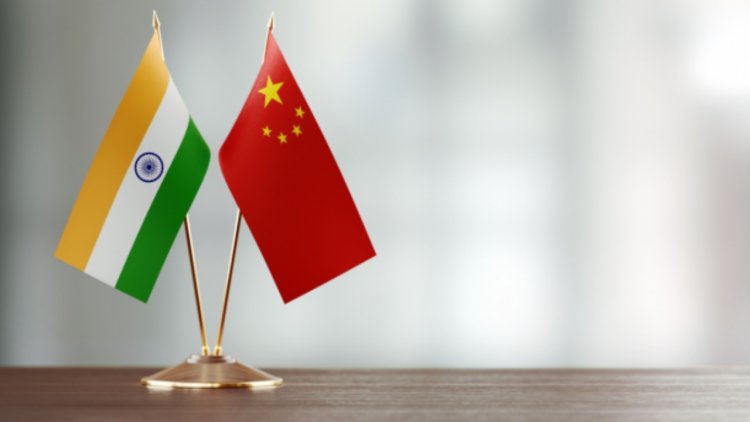India - China: New Map Claims Entire Arunachal Pradesh and the Aksai Chin Region
STORIES, ANALYSES, EXPERT VIEWS

China’s government on August 28 released the “2023 edition of the standard map of China”, which continues to show the entire State of Arunachal Pradesh and the Aksai Chin region within China’s borders.
The territorial claims on China’s western borders, as also the so-called nine-dash line covering the entire South China Sea, are shown on the map as in previous editions. Also as in previous maps, a “tenth dash” is placed east of Taiwan, underlining Beijing’s claims over the island.
The latest map follows Beijing in April announcing it, would “standardise” the names of 11 places in Arunachal Pradesh, including a town close to the Arunachal Pradesh capital of Itanagar. This was the third such list “renaming” places in Arunachal Pradesh, and was seen by observers as a response to India holding events in the lead-up to the G-20 summit in the State, which Beijing had opposed.
China has tightened management of border areas, passing in 2022 a new border law that lists various responsibilities for civilian and military authorities in China to take steps to “safeguard national sovereignty”. The issuing of new names is related to Article 7 of the law, which calls for promoting border education at all levels of government. Article 22 calls for the Chinese military to carry out border drills and to “resolutely prevent, stop and combat” what it calls “invasions, encroachments and provocations”.
China asks India not to ‘over-interpret’: Defending issuing a new “standard map” Chinese Foreign Ministry spokesperson Wang Wenbin said the map “is a routine practice for China to exercise sovereignty in accordance with the law. We hope the relevant side can stay objective and calm, and refrain from over interpreting.”
India protests: an old habit
India has nevertheless, lodged a “strong protest” through diplomatic channels and said that such steps only “complicate the resolution of the boundary question”. He said “We reject these claims as they have no basis. Such steps by the Chinese side only complicate the resolution of the boundary question.”
Minister Jaishankar said: “China has even in the past put out maps which claim the territories which are not China’s, which belong to other countries. This is an old habit of theirs. It is not something which is new. It started in the 1950s…”
“We are very clear what our territories are. This government is very clear about what we need to defend our territories. You can already see that on our borders. I think there should be no doubt about that. Making absurd claims does not make other people’s territories yours,” he said.
Bonhomie appears to have evaporated
All the spirit of bonhomie appears to have evaporated in less than a week’s time, writes Seshadri Chari (former editor of ‘Organiser’). “China’s map shenanigan is clearly aimed at provoking New Delhi to react strongly. Any such reaction will divert the attention of the G20 summit from consensus on peace and progress to conflict….”
Will cast a shadow on President Xi’s expected visit to India
While the map is an annual exercise, Suhasini Haider (Diplomatic editor, The Hindu) writes “the timing of its release is also significant ahead of the G-20 summit in Delhi on September 9-10, which Chinese President Xi Jinping is expected to attend, along with nearly all other G-20 leaders other than Russian President Vladimir Putin, who has conveyed his inability to attend. Mr. Xi is also invited to Indonesia for the East Asia Summit and ASEAN meetings, where Prime Minister Modi is expected to travel as well.”
The Tribune writes “China’s cartographical move, which appears to be a fresh provocation, is set to cast a shadow on President Xi’s expected visit to India next week for the G20 summit.”
India must ‘respond in ways that actually have an impact’
The Telegraph cautions. “As India prepares to host the G20 summit in New Delhi in early September, it must be careful to not allow bilateral tensions with China to overshadow the larger meet and its agenda. At a time when the United States of America and China are locked in tense competition, India must make sure it remains the voice of a large part of the world that does not want to get trapped in a great power rivalry.
“That does not mean that India should ignore China’s provocations. On the contrary, it must respond in ways that actually have an impact. By now, India knows well that talk does not work with China. Instead, what New Delhi needs to do is to find ways of pushing back that serve as a deterrent to Beijing. That includes strengthening India’s military positions along the border and bolstering intelligence cooperation with partners like the US. It includes increasing public appearances of Indian leaders with Tibetan officials, including the Dalai Lama, and demonstrating India’s willingness to expand ties with Taiwan. All of this must be done in a calibrated manner, not to provoke Beijing but to showcase what India could do if China pushes it too far. Yet none of this will work unless the government is honest with Indians about the current status quo at the border. Nothing stops Mr Modi from visiting Arunachal Pradesh — and, indeed, Manipur, which is still in flames — to underscore not just India’s territorial sovereignty but also that its government truly cares for people in the Northeast. Maps matter. But it is the trust of the people of India that should matter the most to the government.”
















